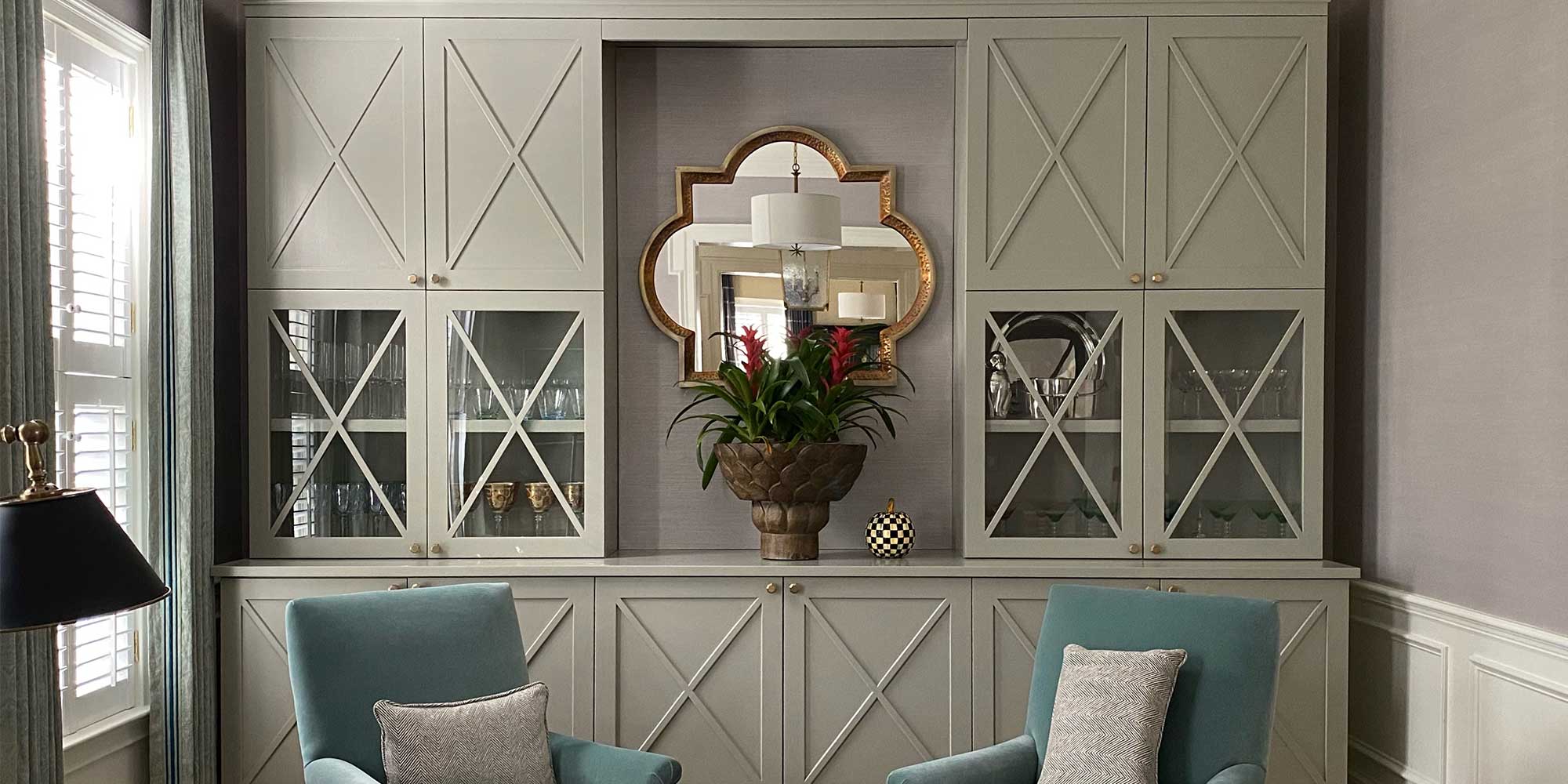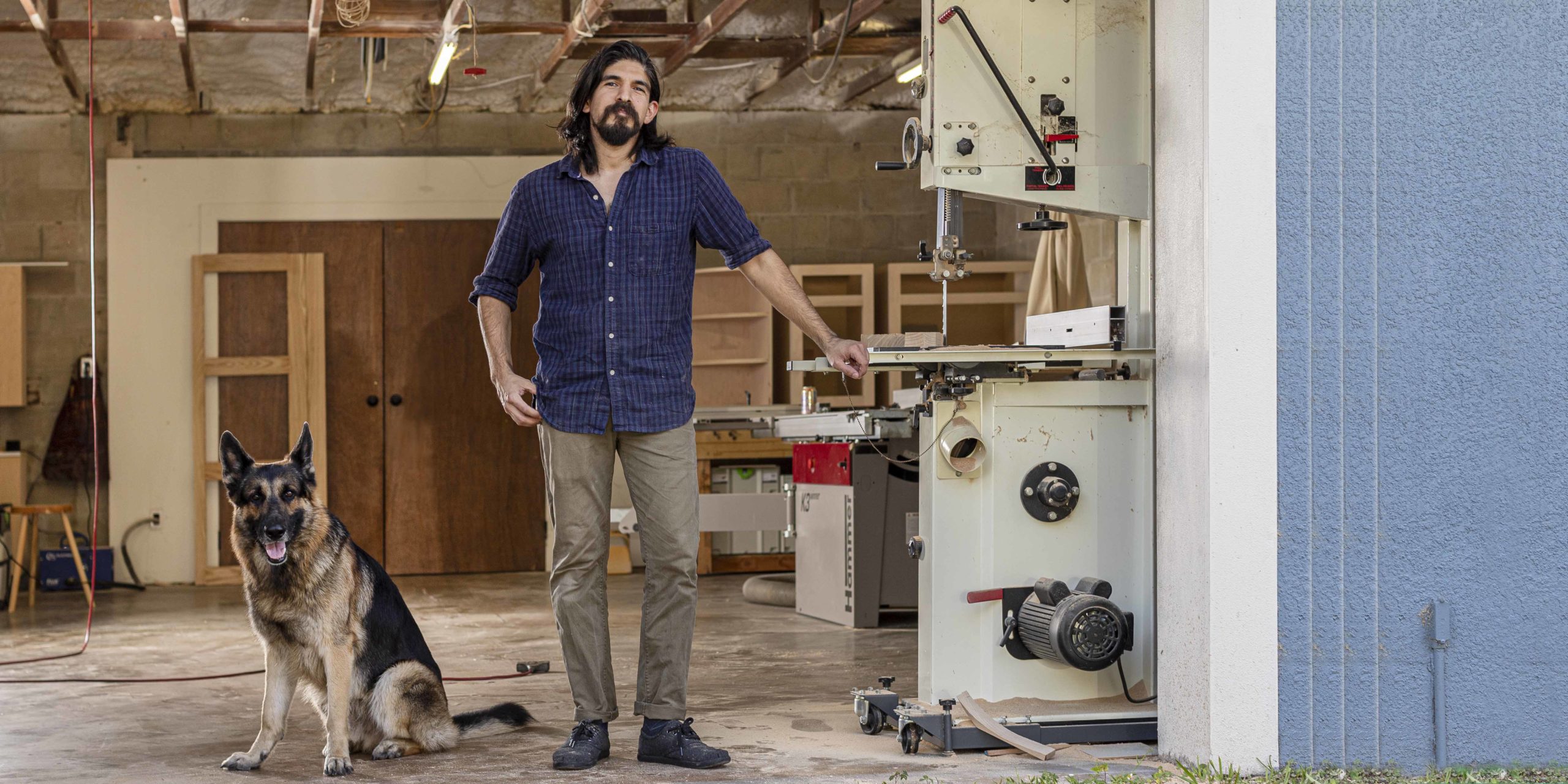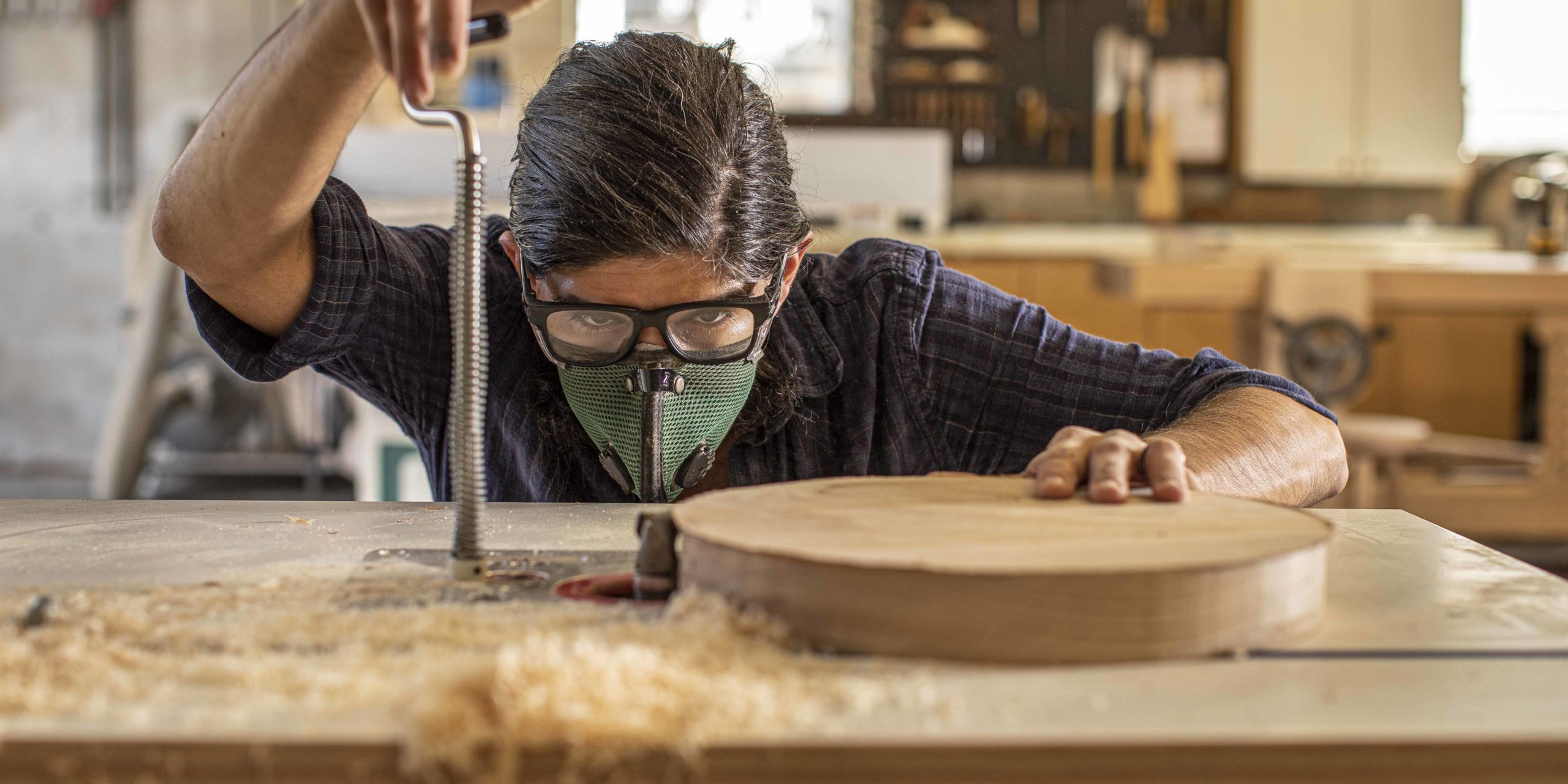Most people would never notice if the flow of the wood grain on their cabinets aligned from door to door. But Gabe Tavarez does. So the founder and lead builder of Alamo Design Co. takes the time on each of his projects to make sure grains flow, joinery is hidden and everything just looks simply, subtly, right. Maybe no one will realize it.
“One person will,” he says with a laugh.
Tavarez started Alamo Design in 2012 as a sort of passion project. He and his wife (and now business partner), Chelsea, had recently purchased a Riverview home that dates back to 1946. It needed significant renovations, from the baseboards on up, most of which involved wood. Tavarez went to school for art and had always been a tinkerer, but woodworking was a new challenge.
“I started slowly picking up tools, and over time I just thought it would be neat to start slapping some pieces of wood together and see what happened,” he says. “If I looked at the stuff that I made initially, it was pretty awful.”
With time, self-instruction and an apprenticeship under his belt, Chelsea and Gabe made the decision to launch Alamo Design out of a workshop in their garage — where all of the company’s products are still built. Furniture just felt like the right combination of hands-on work and artistic design, Gabe Tavarez explains.
“I think it was about seeing tangible results in something,” he says. “I love just being able to start with raw material and end with a product that’s useful.”
“In the beginning it was literally nothing,” Chelsea Tavarez adds. “We would just cold reach out to people and say, hey, we’re here if you have a project. Eventually one person would respond and then another person would respond, and then through Instagram and social media we’ve been able to reach so many people and show our work.”

Word of mouth has been crucial to keeping Alamo Design growing at a consistent but manageable pace, Gabe Tavarez says. So too has their relationship with Oxford Design Studio, the interior design firm within the Oxford Exchange group. Tavarez first worked with the firm during his apprenticeship with another Tampa furniture company, and they’ve since used Alamo Design for a number of residential projects, cabinetry for the upcoming Stovall House social club, and Tavarez’s biggest project to date, more than 60 tables for the Alexander Brown Restaurant in Baltimore, Maryland.
“It was crazy to batch out that many tables. I had one guy in here helping me, but it was just the two of us in here gluing and then finishing all of these tables,” Tavarez says.
Most of Tavarez’s work is done for private residences — cabinets, kitchen built-ins, custom furniture and the like — so he and Chelsea rarely get the opportunity to see his pieces past installation, in context with finished designs. So they made sure to take a special trip to the Alexander Brown to check on the tables.
“That was the first place where we could go see our work and know people were seeing his work as well,” Chelsea Tavarez says. “It was the first really big job in terms of scope, but it was also our first huge monetary job that really gave us the opportunity to invest in tools and be able to breathe.”

Doing custom work, the Tavarezes work with discerning homeowners and interior designers to craft unique pieces for hyper-specific spaces. No two creations come out of the Alamo workshop crafted in the exact same way. Gabe Tavarez describes his style as elegant and minimalistic, but utilitarian and timeless. Everything has a purpose. Fasteners are hidden and edges are smooth so each piece looks unified, even if it’s made of dozens of individual elements. Merely driving a screw through two pieces of wood to connect them won’t do.
Alamo pieces can sometimes look like they’ve been in the space all along, or as if they appeared there by magic.
“The joke that we made is that one day, when somebody is renovating a space that I’ve worked on, they’re going to be very frustrated just trying to find out how I put it on the wall,” he says with a laugh.
Working exclusively in custom wood designs, Tavarez hopes the pieces he creates are both sustainable and sustaining (unlike the Alamo itself; the company is named after the couple’s son, Jack Alamo).
“I want to make things with a better quality material that are going to possibly outlast me,” he says. “Right now we’ve gotten to a point with furniture and cabinetry that, it’s so cheap, it gets turned around quickly and thrown away. It’s the kind of thing that will end up in a landfill in a few years. I want to make things that are quality products, that will withstand the test of time and serve their purpose without being anything that’s overly complicated.”

Over time, as they’ve seen more of their pieces fill homes, businesses and restaurants around Tampa, the Tavarezes have realized that they have quietly helped build the city they’ve lived in since childhood into the kind of place they always wanted to live.
“We were thinking of moving [a few years back], and it was like, let’s move to this town that already has all this stuff,” Chelsea Tavarez recalls. “Tampa, for so long, didn’t have what it has now. We have friends who have started their businesses and their coffee shops here, so instead of moving away because it didn’t have [what we wanted], being a part of why it now has all that to offer is really cool.”
“I love going for drives with our kids and being able to point to a building and say, hey, you see that? I built a bar there, or I built tables there,” Gabe Tavarez adds. “There are so many different things all over the town that I had a role in making possible. This being an adopted hometown of mine, it’s just really cool to drive around your own town and see things that you’ve done.”



